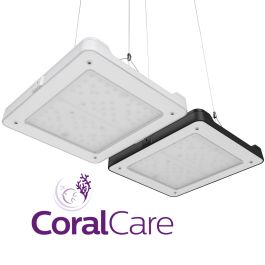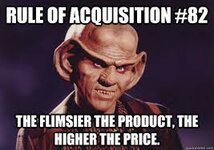Cody
Vice President
Staff member
Administrator
Moderator
Content Moderator
Board Member
Supporting Member
There was a recent thread about the cost of the hobby in general being so expensive, but I wanted to dial it into LED lights for a minute.
What is in your reef LED light? What makes them tick? Well, there’s a printed circuit board with diodes attached to it. That circuit board is attached to a heat sink, and the heat sink has a computer fan. The circuit board is controlled by a pwm controller with a WiFi chip that has a power supply behind it. Add a plastic case around everything to tie it up into a nice bow, and voila, you have a reef LED light. These are all extremely cheap items, like pennies or dollars each for most of these, despite some modern lights being close $1,000 per unit.
So my question is: is there really a higher production cost than what I understand or is this just the case of the price not correlating to the value? It seems it’s the later, in my opinion. For instance, the smaller version of the new radion is maybe $500-600 while the full one is about twice that. The actual material and production cost difference between those two models can’t be more than $20-40. Like I said, all the components involved in making them are dirty cheap.
Anywho, just something I’ve been thinking about lately while looking at the new lights on the market. Having purchased all these parts at retail prices, not wholesale, and made them myself, there just seems to be a major disconnect between the value and price of reef LED lights.
What is in your reef LED light? What makes them tick? Well, there’s a printed circuit board with diodes attached to it. That circuit board is attached to a heat sink, and the heat sink has a computer fan. The circuit board is controlled by a pwm controller with a WiFi chip that has a power supply behind it. Add a plastic case around everything to tie it up into a nice bow, and voila, you have a reef LED light. These are all extremely cheap items, like pennies or dollars each for most of these, despite some modern lights being close $1,000 per unit.
So my question is: is there really a higher production cost than what I understand or is this just the case of the price not correlating to the value? It seems it’s the later, in my opinion. For instance, the smaller version of the new radion is maybe $500-600 while the full one is about twice that. The actual material and production cost difference between those two models can’t be more than $20-40. Like I said, all the components involved in making them are dirty cheap.
Anywho, just something I’ve been thinking about lately while looking at the new lights on the market. Having purchased all these parts at retail prices, not wholesale, and made them myself, there just seems to be a major disconnect between the value and price of reef LED lights.














